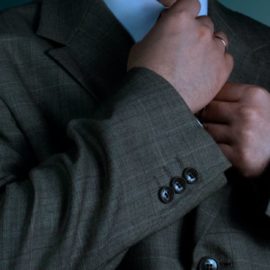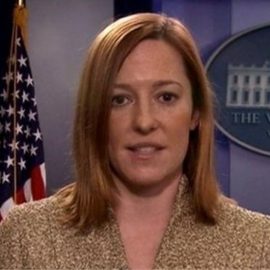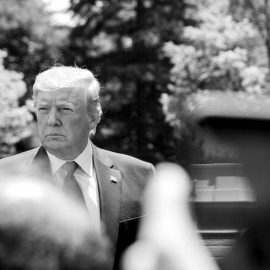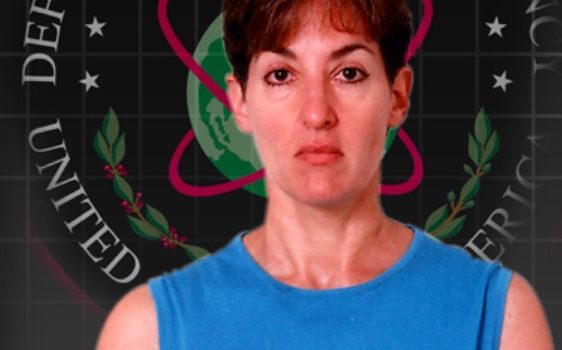
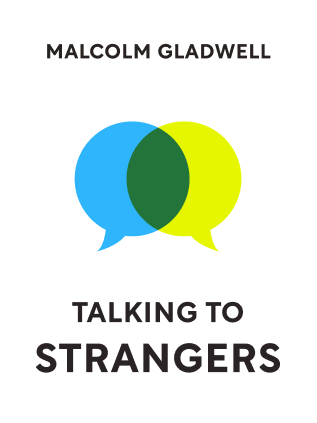
This article is an excerpt from the Shortform book guide to "Talking to Strangers" by Malcolm Gladwell. Shortform has the world's best summaries and analyses of books you should be reading.
Like this article? Sign up for a free trial here .
Who is Ana Montes? How did she manage to fool her colleagues in the Defense Intelligence Agency (DIA) for so long?
Ana Montes was an agent with America’s Defense Intelligence Agency. She was known as the “Queen of Cuba” for her expertise in Cuban intelligence. She was also a spy for Cuba.
Learn how Ana Montes fooled her colleagues, and why we’re all vulnerable to missing the signs right in front of us.
Truth-Default in the DIA
Early in the 1990’s, Cubans were fleeing to the United States to escape Fidel Castro’s rule in Cuba. The journey was dangerous, costing the lives of 24,000 Cubans. In response, a group of immigrants in America founded Brothers to the Rescue, or Hermanos al Rescate. The Brothers flew a small team of planes over the Florida Straits and into Cuban airspace in an effort to save Cuban lives and incite revolt against Castro’s regime.
On February 24, 1996, two Brothers to the Rescue planes were shot out of the sky over Cuba. Four people died. Cuban emigres and Americans alike were furious about the attack. The United Nations denounced the Cuban government. The press followed the event closely, calling the attack an act of war. But the story shifted after former United States Armed Forces rear admiral Eugene Carroll appeared on CNN for an interview. On TV, Carroll told a shocking story:
The day before the attack, February 23, Carroll had met with the Cuban Ministry of Defense. They told him that they were capable of shooting down private United States aircraft. Understandably, Carroll interpreted that as a warning of an upcoming Cuban attack on the Brothers to the Rescue. He immediately relayed the information to the State Department and the Defense Intelligence Agency (DIA). Neither department did anything to stop Brothers to the Rescue from flying the next day.
Suddenly, the story about Cuba’s violent attack became a story about incompetence and negligence in the American government. Can you see any coincidences in this story so far? Let’s review:
- The Cubans deliberately murder American citizens in international airspace.
- Just one day before the attack, a high-ranking American insider (Carroll) was warned it would happen and took that warning to the U.S. government.
- The U.S. government failed to protect the Brothers to the Rescue.
- Luckily for Cuba, Carroll went on TV the day after the attack and told the world his story. He also asked Americans to see the situation from Cuba’s point of view: imagine that Mexican planes were flying over California, dropping leaflets to incite an uprising. If we warned Mexico to stop sending those planes and they didn’t, how long would the American government tolerate them? Essentially, Carroll made Cuba’s case in front of the world.
Does the timing of all of this strike you as odd? If not, don’t worry. It’s only human that you would default to assuming the most likely circumstance was true and take the story as an unfortunate coincidence. Only one counterintelligence analyst in the DIA, Reg Brown, saw the nuances of the timing and went on alert.
Reg Brown’s Suspicion that Ana Montes Was a Spy
The first thing that tipped off Reg Brown that Cuba had orchestrated the events that occurred around the attack was that a Brothers to the Rescue pilot named Juan Pablo Roque turned out to be a spy for Fidel Castro. He had tipped Castro off that there would be planes in the air on February 24. So, in Reg Brown’s mind, it made Carroll’s meeting with Cuba on February 23 very suspicious. This was the perfect day for a warning. Wouldn’t Cuba want to maximize the impact of their warning by making it the day before the attack? Reg Brown decided to look into who set the meeting between Cuba and Eugene Carroll and who selected the date February 23. After a bit of research, he found out that the meeting was scheduled by an agent in the DIA named Ana B. Montes.
There was another suspicious event surrounding the Cuban attack and Ana Montes. After the planes were shot down, Montes was called to the Pentagon. But, later in the evening, Ana Montes had taken a personal phone call and left. This was unheard of, and it made Reg Brown wonder what could have possibly taken the Cuban intelligence expert away from the scene after such a high-profile Cuban attack.
Brown also wondered: If Ana Montes were a spy, wouldn’t her Cuban handler have been desperate to hear from her and learn how the U.S. government planned to respond to the event? Was this why she had left the Pentagon? And on top of that, wasn’t it suspicious that she was also the woman responsible for planning the questionably timed meeting with Eugene Carroll?
Ana Montes was a colleague of Brown’s at the DIA. She was known as the “Queen of Cuba” for her expertise in Cuban intelligence. She was a star in the DIA who had glowing recommendations from her bosses and peers alike. Brown agonized over whether or not to tell someone about his suspicions about Ana Montes. He had very little evidence for such a big accusation. But finally, Reg Brown decided to tell counterintelligence officer Scott Carmichael what he knew.
Scott Carmichael’s Investigation
Reg Brown had to persist for months before Scott Carmichael agreed to pull Ana Montes’ file and look into her. But her file seemed clean—there were no obvious red flags, like large, unexplained sums of money or suspicious behaviors. Still, Carmichael moved ahead, careful to document everything so that he could discount Brown’s suspicions without bringing attention to his investigation.
Eventually, Scott Carmichael called Ana Montes in for a meeting. He was immediately impressed and attracted to her. But Montes seemed to be in a hurry. She said that she needed to leave by 2. Carmichael assumed she was only trying to assert her dominance in the situation. Carmichael lost his patience by saying, “Look. I have suspicions about your involvement with Cuban counterintelligence. This will take as long as it takes.” Carmichael was proud of coming up with something that made Ana be quiet and take him seriously. The interview continued.
When he asked her about the Eugene Carroll meeting, Ana Montes had a perfectly good explanation: February 23 was the most convenient date for all the parties involved with the meeting. When Carmichael asked Montes about leaving the Pentagon, she had another understandable explanation: She had food allergies that prevented her from eating out of the Pentagon vending machine. So she hadn’t been able to eat all day. Finally, after being at the Pentagon for 14 hours straight, she had to get something to eat.
After the meeting, Carmichael corroborated all of her stories. Everything checked out. Carmichael called Reg Brown and assured him that Ana Montes was clean—the investigation was closed.
Ana Montes: Spy
In 2001, an analyst at the National Security Agency (NSA) approached Scott Carmichael with sensitive information: Two years earlier, the NSA had intercepted a Cuban communication and successfully broke the code.
The communication mentioned a prominent Washington figure who was secretly working for Cuba. They called this person Agent S. Agent S had interests in the SAFE system and had traveled to Guantánamo Bay in July 1996.
Immediately, Scott Carmichael was on alert. The SAFE system was the DIA’s computer system. So Agent S was most likely a DIA employee. When he went to cross-reference any DIA employees who traveled to Guantánamo Bay by in July 1996, a familiar name came up: Ana Montes. Carmichael had finally hit the trigger point—he knew that Ana was a spy.
It turned out that Ana Montes had been spying for Cuba since the very start of her career. What’s more, she hadn’t even been very sneaky about it. After her arrest, the DIA found the codes she used to communicate with Cuba in her purse. She had a shortwave radio in her closet. She even asked to take a paid research sabbatical in Havana, Cuba. Does this sound like a woman trying to conceal her double life as a Cuban spy? How did no one but Reg Brown have suspicions?
Well, according to Levine, the answer is that Ana Montes’s behavior never pushed anyone but Reg Brown past the trigger point. She kept to herself, behaved normally, succeeded at work—didn’t raise enough red flags to make anyone doubt her.
But there had been red flags. Scott Carmichael thought back to the interview he had with Montes following the Cuban attack and realized that he missed a crucial clue. When he disarmed Montes by saying he was suspicious of her, she only sat there. At the time, he was happy he got her quiet. But looking back, he could see that a normal person would have argued for her innocence, or at least acted confused.
After Ana Montes was revealed a double agent, Carmichael beat himself up for missing this important clue. But he wasn’t negligent, he was human. He followed up on all the suspicions raised by Reg Brown and none of Ana Montes’s behavior pushed him past the trigger point. So he naturally defaulted to truth until five years later when her name popped up on his computer for visiting Guantanamo.
Think about it this way: Carmichael was faced with two alternatives:
- The very rare chance that a respected DIA agent was a double agent for Cuba
- The more likely possibility that Brown was being paranoid
The human instinct to default to truth is like playing the odds of a situation. History and statistics say that liars and con men are rare, so our natural default is to trust the strangers around us. Unfortunately, that sometimes means that criminals like Ana Montes go years before triggering the doubt necessary to be caught.

———End of Preview———
Like what you just read? Read the rest of the world's best book summary and analysis of Malcolm Gladwell's "Talking to Strangers" at Shortform .
Here's what you'll find in our full Talking to Strangers summary :
- Why we don't understand strangers
- How to talk to strangers in a cautious way so you don't get fooled
- How Hitler deceived so many world leaders

